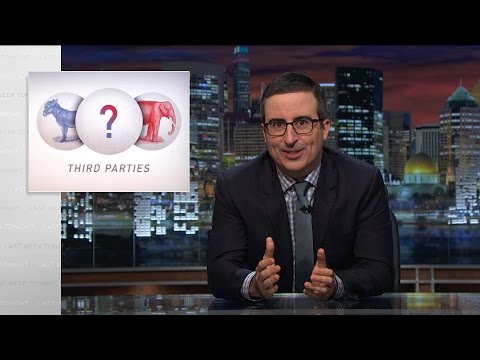
Notícias
Financial crisis of 2007 08 Definition, Causes, Effects, & Facts

He presented a paper entitled, “Has Financial Development Made the World Riskier?” at the annual Economic Policy Symposium of central bankers in Jackson Hole, Wyoming. Rajan’s research found that many big banks were holding derivatives to boost their own profit margins. He warned, “The inter-bank market could freeze up, and one could well have a full-blown financial crisis,” similar to the Long-Term Capital Management crisis. Here’s the timeline from the early warning signs in 2003 to the collapse of the housing market in late 2006. Keep reading to understand the relationships among interest rates, real estate, and the rest of the economy.
Out of the Office, Into a Financial Crisis? – Federal Reserve Bank of Richmond
Out of the Office, Into a Financial Crisis?.
Posted: Wed, 31 May 2023 17:15:10 GMT [source]
As foreclosures increased, repossessions multiplied, boosting the number of homes being sold into a weakened housing market. This was compounded by attempts by delinquent borrowers to try to sell their homes to avoid foreclosure, sometimes in “short sales,” in which lenders accept limited losses if homes were sold for less than the mortgage owed. The subprime mortgage crisis originated in the United States and from 2007 to 2010 developed into a full-blown financial crisis that caused panic around the world.
More meanings of subprime
He stated that the “combined effect of these factors was a financial system vulnerable to self-reinforcing asset price and credit cycles.”[26]
Krugman described the run on the shadow banking system as the “core of what happened” to cause the crisis. Another myth is that the Community Reinvestment Act created the crisis. That’s because it pushed banks to lend more to poor neighborhoods.
The Fed sees a looming credit crunch. What’s that? – Reuters
The Fed sees a looming credit crunch. What’s that?.
Posted: Fri, 24 Mar 2023 07:00:00 GMT [source]
Many homeowners who couldn’t afford conventional mortgages took interest-only loans as they provided lower monthly payments. When home prices fells, many found their homes were no longer worth what they paid for them. At the same time, interest rates rose along with the fed funds rate.
Bank fines and penalties
When U.S. home prices declined steeply after peaking in mid-2006, it became more difficult for borrowers to refinance their loans. As adjustable-rate mortgages began to reset at higher interest rates (causing higher monthly payments), mortgage delinquencies soared. Securities backed with mortgages, including subprime mortgages, widely held by financial firms globally, lost most of their value.
When house prices began to fall in 2006, the demand for subprime MBS evaporated, and those institutions with a large exposure to these products suffered astonishing losses. This crisis is called subprime, since financial institutions concentrated a large amount of “toxic assets” on their balance sheets. These loans, before the real estate bubble that the economy was going through, fell into default, causing the depreciation of these assets. The low interest rates presented by the North American economy at that time led to massive indebtedness of families. In addition, in a scenario in which the home experienced an overvaluation scenario. Credit default swaps (CDS) are financial instruments used as a hedge and protection for debtholders, in particular MBS investors, from the risk of default, or by speculators to profit from default.
Role of Fannie Mae and Freddie Mac
Data analysis conducted by the APL Team noted conventional ARMs had double the delinquency rate of conventional fixed rate mortgages at the height of the financial crisis. In North Carolina, at the peak of the crisis, one in three subprime borrowers with an ARM was delinquent. ARMs were not the sole accelerant of the decline in house prices, rather, it was the combination of ARMs with subprime borrowers and in some cases outright fraud.
They then scrambled to increase the number of loans they made to maintain the balance between assets and liabilities. In their desperation to sell more mortgages, they eased up on credit requirements. Thus, as mortgage loans were granted to these subprime families, the bank was in charge of concentrating these loans in assets that it subsequently traded on the financial markets.
As many borrowers were losing their jobs, their mortgage payments were going up at the same time. Without a job, it was nearly impossible to refinance the mortgage to a lower fixed rate. These mortgages enticed borrowers with a below market interest rate for some predetermined period, followed by market interest rates for the remainder of the mortgage’s term. The subprime mortgage crisis severely weakened the global financial system.
The Causes of the Subprime Mortgage Crisis
Prime mortgage interest rates are the rates at which banks and other mortgage lenders may lend money to customers with the best credit histories. More often, subprime mortgage loans are adjustable rate mortgages (ARMs). A subprime mortgage is generally a loan that is meant to be offered to prospective borrowers with impaired credit records. The higher interest rate is intended to compensate the lender for accepting the greater risk in lending to such borrowers. The interest rate on subprime and prime ARMs can rise significantly over time.
The subprime crisis, in other words, was produced by granting credit to the subprime segment, that is, to people who, under normal financing conditions, have a high credit risk. Its contrast is the prime segment, which has a lower credit risk. Unsecured subprime credit cards tend to have relatively high interest rates (a 29.99% APR in the case of those Capital One Cards), so they can be costly for anyone who doesn’t pay their bill in full each month. The crisis in Europe generally progressed from banking system crises to sovereign debt crises, as many countries elected to bail out their banking systems using taxpayer money. Greece was different in that it concealed large public debts in addition to issues within its banking system. Several countries received bailout packages from the “troika” (European Commission, European Central Bank, International Monetary Fund), which also implemented a series of emergency measures.
That will stabilize the now-uncertain value of the home equity that acts as a buffer for all home mortgages, but most importantly for those held as collateral for residential mortgage-backed securities. Very large losses will, no doubt, be taken as a consequence of the crisis. But after a period of protracted adjustment, the U.S. economy, and the world economy more subprime crisis meaning generally, will be able to get back to business. If the banks were forced to mark their value down, it would have triggered the default clauses of their derivatives contracts. The contracts required coverage from credit default swaps insurance when the MBS value reached a certain level. It would have wiped out all the largest banking institutions in the world.
- A low credit utilization ratio (typically under 30%) is considered a plus.
- They were greedy and handed out interest-only and adjustable-rate mortgages that borrowers were not able to repay.
- Interest-only loans made a lot of subprime mortgages possible.
- As long as the housing market continued to rise, the risk was small.
Credit rating agencies have also developed new credit scoring methodologies for such borrowers. For example, the VantageScore 4.0 model will assign a score to borrowers with a credit history shorter than the six months required by most other scoring models. That has helped to increase the available offerings for some subprime borrowers. Subprime is a credit classification for borrowers with a tarnished or limited credit history and for loans made to such borrowers.
The Fed was raising the fed funds rate, pushing the two-year Treasury bill yield to 4.40 percent, but yields on longer-term bonds weren’t rising as fast. Among the causes that led to the collapse of the financial system, first in the United States and later in the world, the main role of the banks should be highlighted. They acted very unwise, and endowed low-income families with funds to purchase homes that they later could not afford. Credit scores are based on a number of factors, the most important of which is payment history. So paying your credit bills on time is the best way to build and maintain a solid credit score. Another important factor is your credit utilization ratio, which compares the amount of debt you’re currently carrying to the total amount of credit that is available to you.
Most economists thought it just meant that the housing market was cooling off, though, because interest rates were reasonably low, at 6.4 percent for a 30-year fixed-rate mortgage. The subprime mortgage crisis led to the greatest financial emergency since the Wall Street Crash of 1929 and the following Great Depression. Household names such as Wall Street giants Bear Stearns and Lehman Brothers were either taken over or went bankrupt and US stocks fell by 54% over 18 months. Various actions have been taken since the crisis became apparent in August 2007. In September 2008, major instability in world financial markets increased awareness and attention to the crisis. Various agencies and regulators, as well as political officials, began to take additional, more comprehensive steps to handle the crisis.

Loeser explains that these were harmful as “there was a lot of predatory lending door-to-door [selling] even to consumers [who didn’t understand] what they were doing.” Throughout the 1990s to 2000s, Loeser describes how these types of practices became more commonplace. Subprime mortgages are loans given to borrowers who have bad credit. They are a high credit risk because they do not have a strong credit history.
Low interest rates provided cheap credit and more people borrowed money to purchase homes. All kinds of debt were repackaged and resold as collateralized debt obligations. As housing prices declined, many homeowners who had been using their homes as ATMs found they could no longer support their lifestyle.

Senate Banking Committee, Alan Greenspan (chairman of the Federal Reserve) raised serious concerns regarding the systemic financial risk that Fannie Mae and Freddie Mac represented. He implored Congress to take actions to avert a crisis.[267] The GSEs dispute these studies and dismissed Greenspan’s testimony. Those of us who have looked to the self-interest of lending institutions to protect shareholders’ equity, myself included, are in a state of shocked disbelief. Our books are available by subscription or purchase to libraries and institutions. Report to Congress on the root causes of the foreclosure crisis, January. Right after Rajan’s announcement, investors started buying more Treasurys, pushing yields down, but they were buying more long-term Treasurys, maturing between three to 20 years, than short-term bills, with terms ranging from one month to two years.
